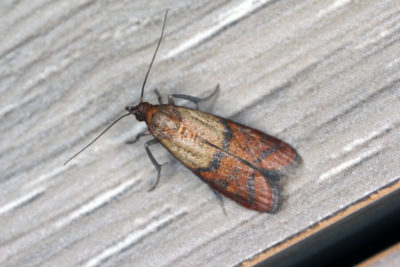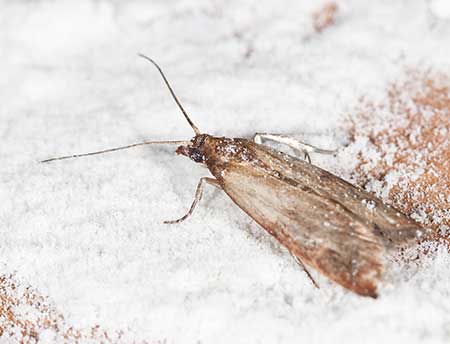Indian meal moths are one of the most common pantry pests in the region and one of the more unfortunate pests to discover. There’s nothing worse than getting ready to bake some delicious deserts only to find out that Indian meal moths or their larvae are crawling around in your ingredients. They hide in items that we pick up from the grocery store and pop out at just the right time to leave us discouraged and disgusted. So, what can you do when Indian meal moths claim your pantry in Murfreesboro TN? Read on for advice from The Bug Man’s technicians!
Do I Have Indian Meal Moths?
There are many kinds of moths around Central TN, but Indian meal moths are a particular moth species known and named for infesting dry goods, like cornmeal. These are a few ways you can identify the moths in your home as Indian meal moths:
- Indian meal moths will often be found in your kitchen, and even more often in your pantry, which is dark and full of food for them to eat and hide in.
- They have distinct reddish-brown markings arranged in layered patterns across their wings.
- You will usually find them around or inside boxes that you’ve picked up from the grocery store that were already damged. Look for rips and tears on food items in your pantry.
- Their larvae look like tiny, cream-colored worms with dark heads.
Tips for Preventing Indianmeal Moths
Unfortunately, it can be hard to prevent an infestation of Indian meal moths before it gets out of hand. If you can stop an infestation before it even starts, you’ll save a lot of time, effort, and money. Here are some tips for keeping Indian meal moths out of your home:
- Look for damage before purchasing boxed or canned food items.
- Avoid leaving unsealed food out.
- Store your food in airtight containers and stow it away after eating.
- Keep your pantry closed as often as you can.
- Fix any broken screens on your windows and doors.
- Seal off any gaps or cracks in your exterior walls and foundation.
Expert Pantry Pest Control
If you’ve tried everything and are still finding Indian meal moths in your dry food products, it’s time to bring in the help of a professional pest control company. The Bug Man’s technicians are trained to identify all types of pantry pests living around Murfreesboro TN and remove them from both spots that you’ve found and spots where you wouldn’t think to look. For a free quote or to learn more about our Indian meal moth removal services, contact us today!


